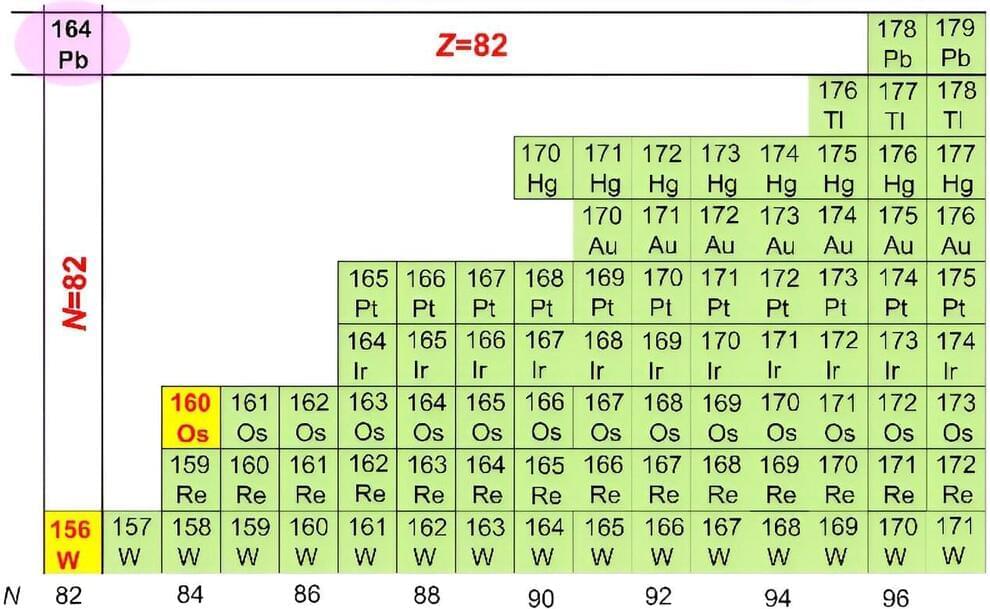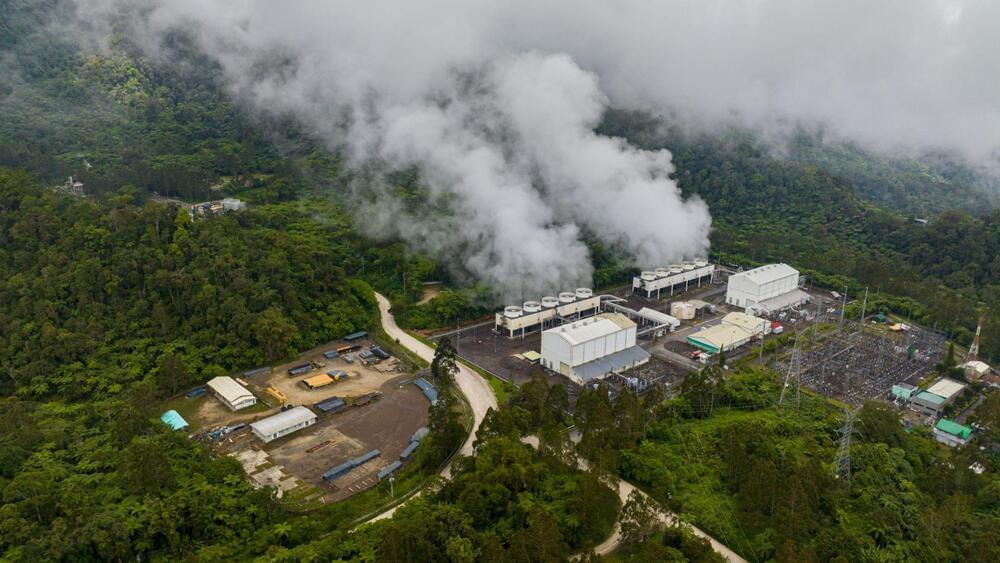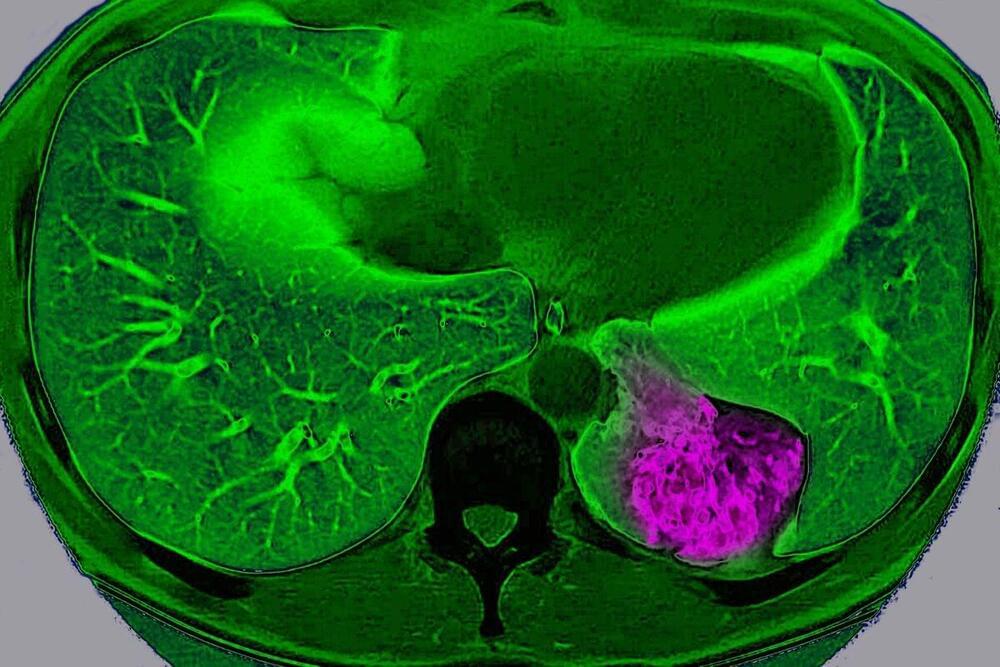Two cutting-edge display technologies in one device.



Researchers at the Institute of Modern Physics (IMP) of the Chinese Academy of Sciences (CAS) and their collaborators have synthesized two new isotopes—osmium-160 and tungsten-156—which sheds new light on nuclear structures and hints that lead-164 could be a doubly magic nucleus with increased stability.
The study was published in Physical Review Letters and highlighted as an Editors’ Suggestion.
“Magic numbers” of protons and neutrons can make an atomic nucleus particularly stable. The traditional magic numbers include 8, 20, 28, 50, 82 and 126. In previous studies, researchers discovered the vanishing of traditional magic numbers and the emergence of new magic numbers on the neutron-rich side of the chart of nuclides.


An often-overlooked water plant that can double its biomass in two days, capture nitrogen from the air—making it a valuable green fertilizer—and be fed to poultry and livestock could serve as life-saving food for humans in the event of a catastrophe or disaster, a new study led by Penn State researchers suggests.
Native to the eastern U.S., the plant, azolla caroliniana Willd—commonly known as Carolina azolla—also could ease food insecurity in the near future, according to findings recently published in Food Science & Nutrition. The researchers found that the Carolina strain of azolla is more digestible and nutritious for humans than azolla varieties that grow in the wild and also are cultivated in Asia and Africa for livestock feed.
The study, which was led by Daniel Winstead, a research assistant in the labs of Michael Jacobson, professor of ecosystem science and management, and Francesco Di Gioia, assistant professor of vegetable crop science, is part of a larger interdisciplinary research project called Food Resilience in the Face of Catastrophic Global Events conducted in the College of Agricultural Sciences.

Researchers from Ohio State University have developed an innovative method to capture carbon dioxide (CO2) directly from the atmosphere. Powered by geothermal energy, the team’s method poses a climate-friendly alternative to traditional carbon capture technologies. It highlights the synergy between Direct Air Carbon Dioxide Capture (DACC) technologies and renewable energies from beneath the Earth’s surface.
The approach, named Direct Air CO2 Capture with CO2 Utilization and Storage (DACCUS), promises a significant decrease in atmospheric CO2 levels, a major contributor to global warming.
Climate change primarily results from increased CO2 levels in the Earth’s atmosphere, largely due to human activities like burning fossil fuels for heat, electricity, and transportation.


Non-personalized content and ads are influenced by things like the content you’re currently viewing and your location (ad serving is based on general location). Personalized content and ads can also include things like video recommendations, a customized YouTube homepage, and tailored ads based on past activity, like the videos you watch and the things you search for on YouTube. We also use cookies and data to tailor the experience to be age-appropriate, if relevant.
Select “More options” to see additional information, including details about managing your privacy settings. You can also visit g.co/privacytools at any time.
Genetic Engineering and DNA alteration is an emerging technology with huge ramifications in the future, including potentially altering the DNA of adult humans, not just embryos or plants \& animals.
Try Dashlane here: https://www.dashlane.com/isaacarthur.
Get 10% off now with my promo code: isaacarthur.
Visit our Website: http://www.isaacarthur.net.
Join Nebula: https://nebula.tv/videos/isaacarthur–…
Support us on Patreon: / isaacarthur.
Support us on Subscribestar: https://www.subscribestar.com/isaac-a…
Facebook Group: / 1583992725237264
Reddit: / isaacarthur.
Twitter: / isaac_a_arthur on Twitter and RT our future content.
SFIA Discord Server: / discord.
Listen or Download the audio of this episode from Soundcloud: Episode’s Audio-only version:
/ dna-manipulation-in-living-subjects.
Episode’s Narration-only version: / dna-manipulation-in-living-subjects-narrat…
Credits:
DNA Manipulation in Living Subjects (original title)
Genetically Altering Living Organisms.
Episode 227; Feb 27, 2020
Writers:
Isaac Arthur.
Editors:
METROPOLIS a film by Fritz Lang — Version “Cobra — 2022” — 4K Remastered — 60fps — Also available on UHD 4K download!
Re-edited \& Reframed — New Time Mapping (some technical considerations below):
New Intertitles \& English Adaptation — Screenplay by Maximianno Cobra.
Music — Original Score and Soundtrack (2022)
“Metropolis — Ordo ab Chao” Symphony.
by Maximianno Cobra.
Recorded by TEMPUS Collection — Europa Philharmonia Orchestra.
www.tempuscollection.com.
IMAGINARY STREAMS
Post-production \& Mastering.
www.imaginarystreams.com.